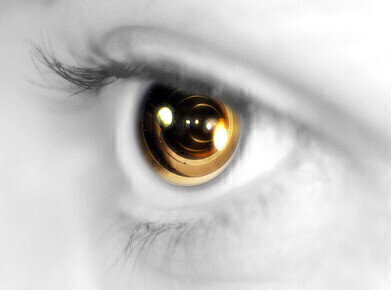News & Views
How Does a Bionic Eye Work?
Feb 01 2016
While it may sound like something straight out of a Marvel comic, the ‘bionic eye’ is a very real medical revelation that’s already transforming lives. After more than six years of suffering from the inherited disorder retinitis pigmentosa, British woman Rhian Lewis can finally see again. And it’s all thanks to an ultra-advanced bionic eye that was transplanted as part of an ongoing trail at Oxford’s John Radcliffe hospital. In a feat of medical brilliance, a team of Oxford Eye hospital surgeons implanted a miniscule electronic chip in the back of the right eye’s retina.
“They said I might not get any sensation and then all of a sudden within seconds there was like this flashing in my eye, which has seen nothing for over 16 years, so it was like, oh my god, wow!” recalls Rhian.
Understanding the eye
So what exactly is retinitis pigmentosa? Put simply, it’s a genetic condition that causes the photoreceptors to gradually deteriorate. As the retina’s main light detecting cells, deterioration can lead to blindness. In the UK around one in three to four thousand people suffer from the condition, which currently has no known cure.
German precision strikes again
While the Oxford Eye hospital can take credit for the transplant it was German firm, Retina Implant AG that developed the implant. Since 2003, the medical technology start-up company has dedicated itself to developing the world’s first fully functioning electronic retinal prosthesis.
The eye is an incredibly complex organ, which goes hand in hand with the need for sophisticated technology. Retina Implant AG delivered with a 3mm square chip made up of 1,500 light sensors. These actively send pulsed electrical signals to nerve cells using a tiny magnetic coil powered computer that’s implanted beneath the skin behind the ear.
At first patients see bright flashes of light, but over time the brain learns to translate these flashes into meaningful images. Using a small wireless power supply owners are able to adjust sensitivity, contrast and frequency. While the bionic chip doesn’t simulate the clarity of a fully functional human eye, it does have the power to transform lives.
“It’s an amazing process because what Rhian and others are trying to do is reactivate a part of the brain that hasn’t been doing anything for the last 10 years or so,” he said. “There is a lot of rehabilitation because basically they are learning to see again,” explains Prof Robert MacLaren, head research scientist at Oxford Eye hospital.
Want to know more about scientific research into the complex optical system of the eyes? ‘Large Volume Imaging of Eye Muscle by 3View®Serial Block Face Imaging’ looks at three dimensional nanometric imaging and its growing importance in many areas of biomedical research.
Image via Flickr Creative Commons. Photo credits: Alexander Boden
Digital Edition
Lab Asia 31.2 April 2024
April 2024
In This Edition Chromatography Articles - Approaches to troubleshooting an SPE method for the analysis of oligonucleotides (pt i) - High-precision liquid flow processes demand full fluidic c...
View all digital editions
Events
Apr 22 2024 Marrakech, Morroco
Making Pharmaceuticals Exhibition & Conference
Apr 23 2024 Coventry, UK
Apr 23 2024 Kintex, South Korea
Apr 23 2024 Seoul, South Korea
Apr 24 2024 Jakarta, Indonesia








.jpg)









